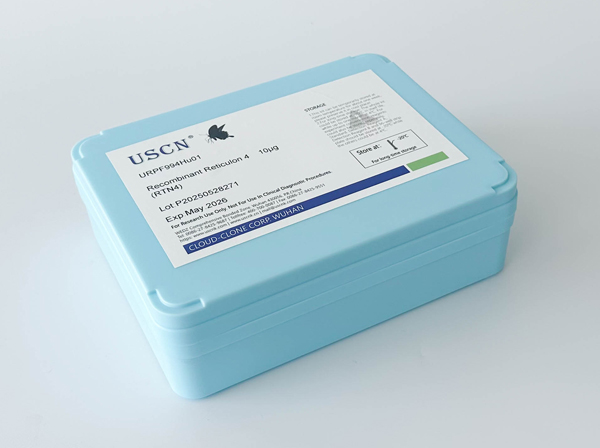Active Microfibrillar Associated Protein 2 (MFAP2)
MAGP1; Microfibril-associated glycoprotein 1
- Product No.UAPC618Mu01
- Organism SpeciesMus musculus (Mouse) Same name, Different species.
- Buffer FormulationPBS, pH7.4, containing 0.01% SKL, 5% Trehalose.
- TraitsFreeze-dried powder
- Purity> 80%
- Isoelectric Point4.8
- ApplicationsCell culture; Activity Assays.
- Download Instruction Manual
- UOM 10µg50µg 200µg 1mg 5mg
-
FOB
US$ 177
For more details, please contact local distributors!US$ 442
For more details, please contact local distributors! US$ 884
For more details, please contact local distributors! US$ 2652
For more details, please contact local distributors! US$ 6630
For more details, please contact local distributors!
ACTIVITY TEST of the Active Microfibrillar Associated Protein 2 (MFAP2)

Microfibrillar Associated Protein 2 (MFAP2) is an O-glycosylated protein that is secreted into the extracellular space and matrix. It plays a crucial role in connecting with biglycan and elastin in a ternary complex, supporting and maintaining the distensibility of the juxtacanalicular region of collector channels.It is reported that BGN can be combined with MFAP2 to help maintain tissue elasticity and toughness, which is particularly important for tissues such as blood vessels and skin that require a high degree of flexibility and toughness.Thus a functional ELISA assay was conducted to detect the interaction of recombinant mouse MFAP2 and recombinant rat BGN. Briefly, MFAP2 was diluted serially in PBS with 0.01% BSA (pH 7.4). Duplicate samples of 100 μl were then transferred to BGN-coated microtiter wells and incubated for 1h at 37℃. Wells were washed with PBST and incubated for 1h with anti-MFAP2 pAb, then aspirated and washed 3 times. After incubation with HRP labelled secondary antibody for 1h at 37℃, wells were aspirated and washed 5 times. With the addition of substrate solution, wells were incubated 15-25 minutes at 37℃. Finally, add 50 µL stop solution to the wells and read at 450/630nm immediately. The binding activity of recombinant mouse MFAP2 and recombinant rat BGN was shown in Figure 1, the EC50 for this effect is 0.031ug/mL.
USAGE of the Active Microfibrillar Associated Protein 2 (MFAP2)
Reconstitute in 10mM PBS (pH7.4) to a concentration of 0.1-1.0 mg/mL. Do not vortex.
STORAGE of the Active Microfibrillar Associated Protein 2 (MFAP2)
Avoid repeated freeze/thaw cycles. Store at 2-8°C for one month. Aliquot and store at -80°C for 12 months.
STABILITY of the Active Microfibrillar Associated Protein 2 (MFAP2)
The thermal stability is described by the loss rate. The loss rate was determined by accelerated thermal degradation test, that is, incubate the protein at 37°C for 48h, and no obvious degradation and precipitation were observed. The loss rate is less than 5% within the expiration date under appropriate storage condition.
INCREMENT SERVICES
BCA Protein Quantification Kit
Molecular Mass Marker for Protein
Monoclonal Antibody Customized Service
Polyclonal Antibody Customized Service
Protein Activity Test Experiment Service
Electrophoretic Mobility Shift Assay (EMSA) Experiment Service
Buffer
Lentivirus Packaging Experiment Service
Adenovirus Packaging Experiment Service
Real Time PCR Experimental Service
Spike RBD Protein (S-RBD)
Protein G
Protein A
Related products
| Catalog No. | Organism species: Mus musculus (Mouse) | Applications (RESEARCH USE ONLY!) |
| UAPC618Mu01 | Active Microfibrillar Associated Protein 2 (MFAP2) | Cell culture; Activity Assays. |
| URPC618Mu01 | Recombinant Microfibrillar Associated Protein 2 (MFAP2) | Positive Control; Immunogen; SDS-PAGE; WB. |
| UPAC618Mu01 | Polyclonal Antibody to Microfibrillar Associated Protein 2 (MFAP2) | WB; IHC |
| USEC618Mu | ELISA Kit for Microfibrillar Associated Protein 2 (MFAP2) | Enzyme-linked immunosorbent assay for Antigen Detection. |



